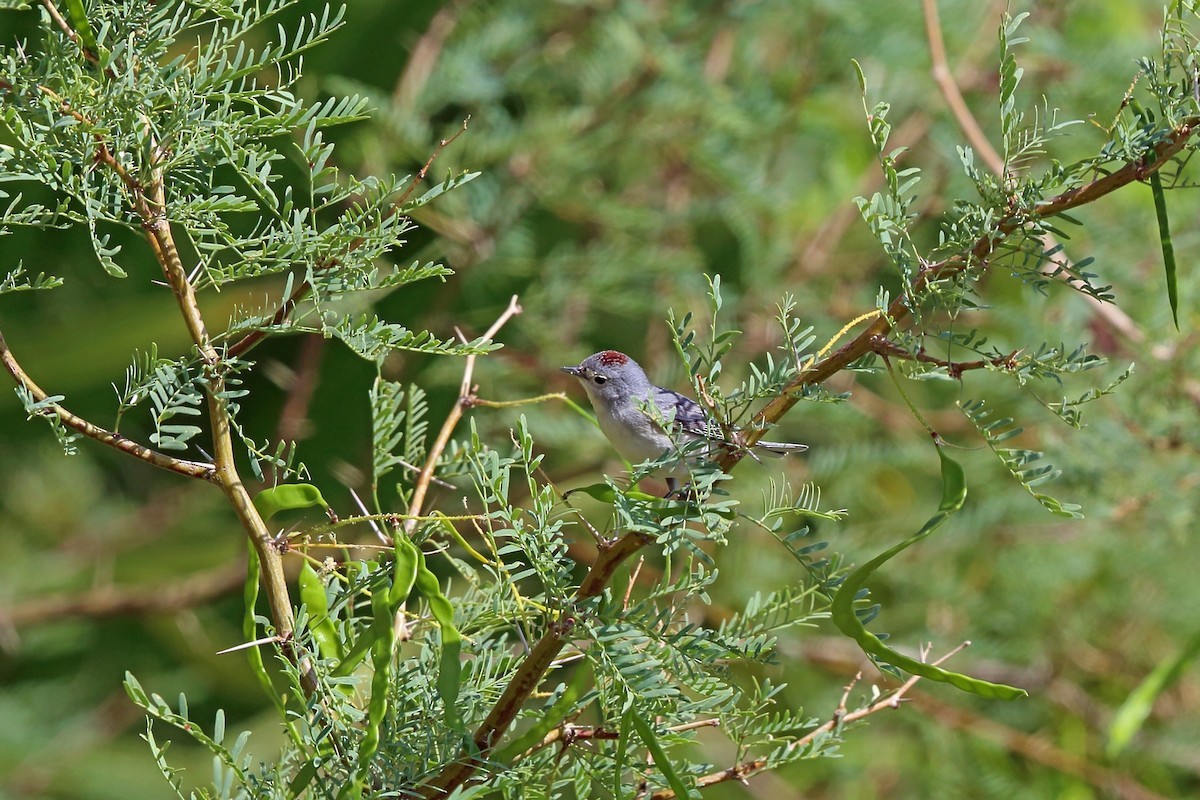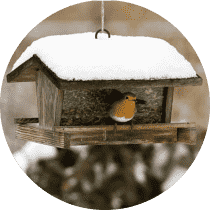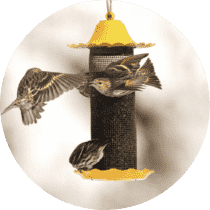Lucy's Warbler
A species of Leiothlypis Warblers Scientific name : Leiothlypis luciae Genus : Leiothlypis Warblers
Lucy's Warbler, A species of Leiothlypis Warblers
Botanical name: Leiothlypis luciae
Genus: Leiothlypis Warblers
Content
Description General Info
 Photo By Nigel Voaden
Photo By Nigel Voaden Description
Lucy's warbler is the smallest species of New World warbler. It measures from 9 to 12 cm (3.5 to 4.7 in) in length and can weigh from 5.1 to 7.9 g (0.18 to 0.28 oz), thus being slightly smaller even than the warblers formerly placed in the genus Parula. Among standard measurements, the wing chord is 49 to 61 mm (1.9 to 2.4 in), the tail is 33 to 41 mm (1.3 to 1.6 in), the bill is 7.8 to 9 mm (0.31 to 0.35 in) and the tarsus is 15 to 17.5 mm (0.59 to 0.69 in). It is rather nondescript compared to other wood-warblers, being perhaps the palest species in its family. Its head and upperparts are pale gray, while underparts are whitish. It has a white eyering and a small, pointed bill. Both sexes have a rufous rump, a diagnostic field mark. Adult males also have a small rusty patch on their crown. Juveniles are paler, with a tawny rump and buffy wingbars. Lucy's warbler is closely related to Virginia's warbler, Nashville warbler and Colima warbler. The common name and binomial of this species commemorate Lucy Hunter Baird, daughter of ornithologist Spencer Fullerton Baird. Lucy's warblers inhabit riparian mesquite and brushy country of the southwestern United States and northwestern Mexico. It can nest in the driest vegetated stretches of the Sonora Desert and nest in possibly the driest habitats of any New World warbler. 
Size
8 - 13 cm
Life Expectancy
5.8-6 years
Nest Placement
Cavity
Clutch Size
3 - 7 eggs
Feeding Habits
Lucy's Warbler's diet primarily consists of small insects like beetles, caterpillars, bugs, leafhoppers, ants, bees, wasps, and spiders. They glean food from leaves, branches, and bark and often forage high in trees or on the ground, displaying agility by hanging inverted while feeding.
Habitat
Lucy's Warbler thrives in the arid lowland riparian zones of the southwestern United States, favoring dense mesquite woodlands, mesic upland desert scrubs, and xeroriparian vegetation. They are found primarily below 3,000 feet elevation, although they can occupy open woodlands up to 5,800 feet. Vegetation such as mesquite, tamarisk, and acacia typifies their habitat. Seasonally, lucy's Warbler adjusts nesting and molting locations, with winter habitats in Mexico's riparian and thorn forests.
Nest Behavior
Female lucy's Warbler constructs the nest, which then serves for egg-laying. The species adapts to various cavities for nesting, showing flexibility.
Nest Characteristics
The nest of lucy's Warbler is typically found in cavities, with locations ranging from low heights to up to 20 feet. It's made from twigs, grass, and leaves, often lined with softer materials like hair and feathers. The nest dimensions are about 3.4 inches wide, 3 inches tall, and the cup within measures 2 inches across.
Dite type
Insectivorous
General Info
Feeding Habits
Bird food type
Bird Feeder Type

Small Hopper

Small Tube Feeder
Sounds
Song
Recording location: United States
Song
Recording location: United States
Behavior
Lucy's Warbler exhibit distinct traits during their active phases, predominantly around breeding times. Upon returning from migration, males stake territorial claims with incessant singing, especially dense in prime habitats. They are territorial, defending their areas with vigor through song duels and physical confrontation upon intrusion. Their courtship display is notable—males showcase their cinnamon rump patch and crest feathers to females in a characteristic posture. Both sexes partake in nesting duties, and post-breeding, they can be seen foraging in cohesive family units. Lucy's Warbler interactions with their environment reflect a life tailored to the specific nuances of their habitats, involving both competitive and cooperative behaviors.

 Photo By Nigel Voaden
Photo By Nigel Voaden Scientific Classification
Phylum
Chordates Class
Birds Order
Perching birds Family
New world warblers Genus
Leiothlypis Warblers Species
Lucy's Warbler